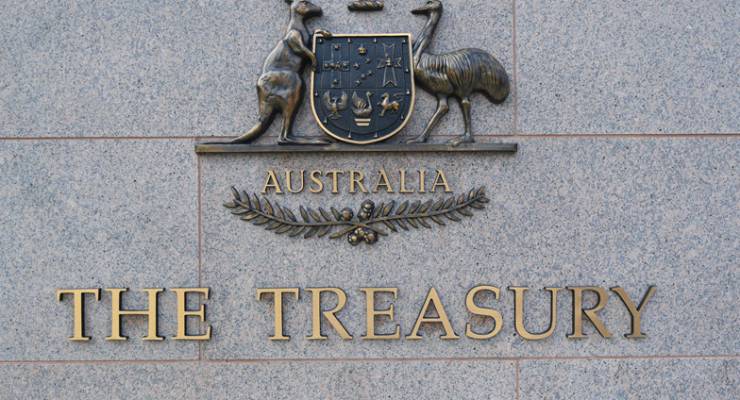
If this year’s budget is all about good debt and bad debt, the government should seriously consider returning to Labor’s model of the National Broadband Network.
Treasurer Scott Morrison has differentiated between “good debt” and “bad debt”, and the Coalition government seems less afraid to turn its back on some former government positions, so the best “good debt” would be a return to a full fibre NBN.
The NBN was always kept off the budget bottom line because it will make a return for the government. To justify the switch to the “multi-technology mix” and away from the fibre-to-the-premises network, the government conducted a hasty, highly politicised review of the technology make-up in 2013. Time has passed, the dust has settled. Stories of people having issues with their NBN connection continue to pile up, and the government could get on the front foot before it becomes a much bigger problem. If the government is making the argument that investment in infrastructure is a good thing, it would make sense to increase the investment in the NBN back to what was originally planned.
[Essential: it’s agreed — NBN officially a dud]
Turnbull said in a radio interview last week that the network will be half complete — that is, half of Australian households will be able to order an NBN service — by the middle of this year. Now would be a good time to conduct a complete non-partisan cost-benefit analysis into the NBN, knowing now what the management of NBN Co knows about the service and what is possible with half the network complete. The company is currently hamstrung by policy guidelines to do whatever is the cheapest in any particular area, rather than thinking about the long-term benefits. According to NBN Co’s latest corporate plan, the switch from fibre-to-the-node to fibre-to-the-premises in most areas would cause the cost of installation per premises to rise from $2300 to around $4400. Investing an additional $2300 to most Australian households to provide world-class internet access seems a worthy investment, and one that would pay off over the long term as not only beneficial to the public, but an asset that will be worth much more to future governments than the Frankenstein’s broadband network being built today.
The government can change the policy on the back of a new analysis on whether the extra investment in a full fibre network would be beneficial in the long term, taking into account all the side benefits outside of just giving everyone in Australia faster internet. That would include remote working as the Nationals continue their obsession with decentralisation and the government attempts to address housing affordability.
In last year’s budget, the government shifted its investment in the NBN — instead of admitting their NBN plan cost more than promised — and agreed to loan NBN Co the money it needed to complete the NBN above and beyond the $29.5 billion cap on equity funding, to be repaid in a few years when NBN Co is in a position to go to the market and get that money from private entities. The government could just treat NBN as what it was supposed to be this whole time — an infrastructure project — and for the medium term abandon any idea that anyone but government should be involved in what it is doing.
[You, yes YOU, own the NBN, so demand a higher goddamn standard]
While on infrastructure, the government should also give careful consideration to either high-speed rail on the eastern seaboard or the recent proposal for a train between Sydney and Canberra that could cut the travel time down from four hours to two.
In the next financial year, the federal government’s school chaplaincy funding is set to expire. Having already upset the Catholics this week with Gonski 2.0, the Prime Minister should go whole hog and refuse to keep funding the $245 million program. Additionally — while we are there — the government could reinvest a small portion of that funding in keeping Safe Schools, and even fund separate anti-bullying programs just to quell the mistaken argument that Safe Schools is somehow being used instead of a broader anti-bullying programs.
In the interest of open government, and transparency, the government should also heavily invest in adequate staffing and resources for the Freedom of Information divisions of each department, but this should be part of a larger overhaul of Australia’s transparency regime, which should focus on making documents public by default, with very high bars set on agencies to argue against releasing documents, no fees for FOI requests, and forcing agencies to keep disclosure logs up to date, and publicly available.








The Rudd NBN was a great infrastructure project guaranteed to create – wait for it, politicians’ favourite four-letter word alert – JOBS! That’s why it was doubly incomprehensible to witness the vengeful and idiotic behaviour of Abbott/Turnbull in bastardising the original concept.
Your ideas are way too sensible, Josh. And you don’t even name which electorates you are trying to swing/buy.
Josh.
“Return to Labor’s fibre NBN and build a Very Fast Train Melbourne to Brisbane.” We need you to be the next PM.
BTW. Japan will complete the first stage of the new technology maglev train capable of 600 kph by 2027. Australia should not build a train with steel wheels that runs on steel tracks. We should jump straight to the new technology. It would cost more but ultimately be the best investment.
For low hanging ‘good debt’ fruit, nothing comes remotely close to a full bottle NBN. This LNP is a party of wreckers, of punishers and straiteners, and it was always thus.